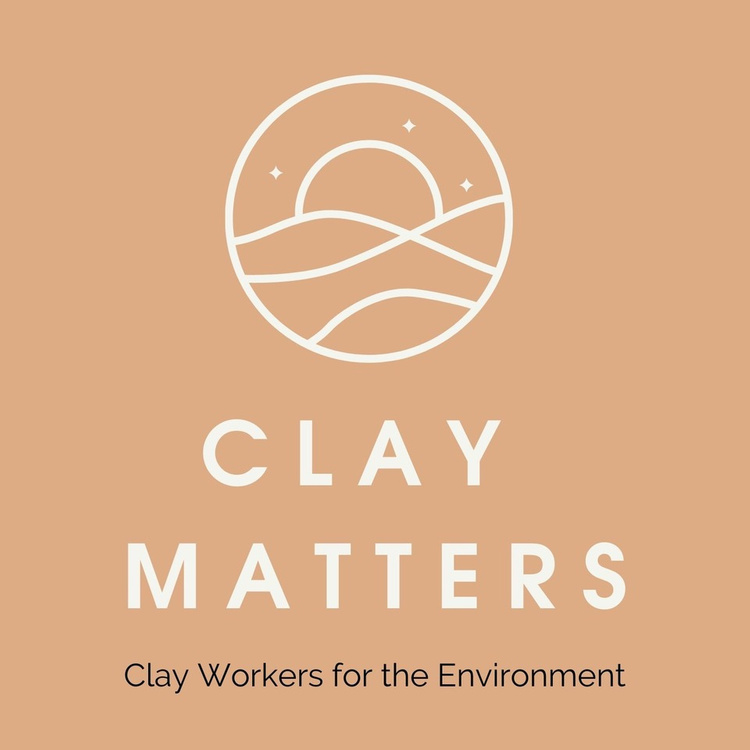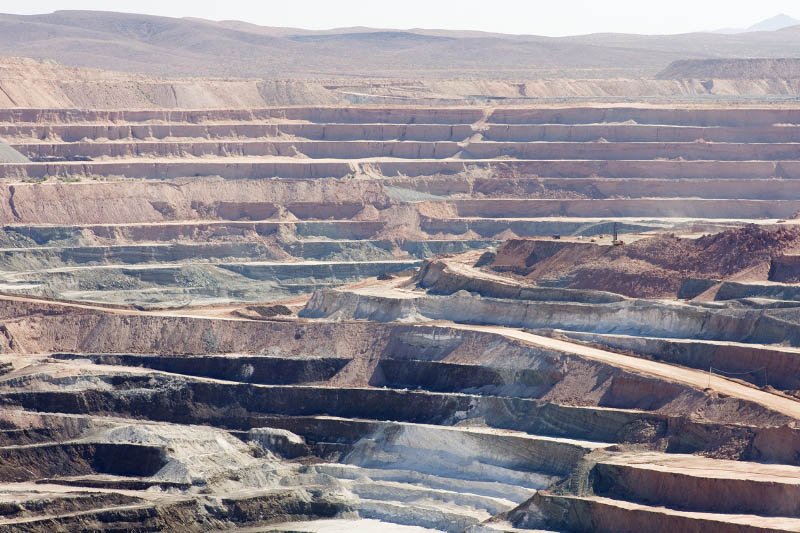Gerstely Borate
General Information:
Chemical formula: 2CaO Na2O 3B2O3 7H2O
Other names: Colemanite, Calcium Borate, Borocalcite
Sources:
- Gerstley Borate (United States)
Common forms:
Mineralogically it is a combination of colemanite, ulexite and high plasticity clay (likely hectorite). 1
Ceramic Substitutes: Colemanite, Ulexite, Gillespie Borate, and boron frits.
Gerstley Borate supplies B2O3, CaO, other fluxes, SiO2, and Al2O3. Gerstley borate is a calcium borate ore containing the mineral Ulexite, along with accessory minerals such as Bentonite, Colemanite, and Probertite. Gerstley borate was formed in marshes and drying lake basins during the Miocene (10 million years ago). Gerstley borate is named after James Gerstley, former managing director of Borax Consolidated Ltd. It is manufactured by U.S. Borax and Chemical Corp.; the mine is located near Death Valley, CA.
The melting behavior of ulexite and colemanite is quite different, the unusual early melting behavior Gerstley Borate exhibits this, it suddenly implodes to a brown opaque melt (because of the earlier fluxing of ulexite) which later turns transparent (when the colemanite joins in). It begins to melt between 1550F and 1600F and is a clear amber glass by 1750F and ultraclear and glossy by cone 06 (Ulexite melts better but it is not commonly in use in ceramics). It has thus been a staple among potters for many years. 50% or more can be found in many cone 06-02 glazes and 30% is common in cone 6 glazes. Gerstley Borate is also very plastic and thus suspends and hardens glazes as they dry.
The US Borax mine in Boron, California was closed in 2000 and remaining stocks were to be depleted in 2-3 years. There was alarm across the ceramic community in North America leading up to and after the closure (because Gerstley Borate formed the basis of so many glazes). However, in June 2011, the supplier, Laguna Clay, announced that there was again a large supply still available (from an unused stockpile). That lasted until 2022 when rumours arose that it would become permanently unavailable.
The lower the percentage of Gerstley Borate in a glaze recipe the more practical it is to just replace it with a substitute (like Gillespie Borate). But when the proportion gets higher the best approach to finding an alternative is to use glaze chemistry to substitute other material to source the boron(B2O3). Frits, for example, are a less volatile alternative source for B2O3, more consistent and reliable and do not flocculate or gel the glaze as Gerstley Borate does. However, no available frit contains as much B2O3 as Gerstely Borate, and so, in some cases it is not possible to source sufficient B2O3 for existing glaze recipes.
The melting behavior of ulexite and colemanite is quite different, the unusual early melting behavior Gerstley Borate exhibits this, it suddenly implodes to a brown opaque melt (because of the earlier fluxing of ulexite) which later turns transparent (when the colemanite joins in). It begins to melt between 1550F and 1600F and is a clear amber glass by 1750F and ultraclear and glossy by cone 06 (Ulexite melts better but it is not commonly in use in ceramics). It has thus been a staple among potters for many years. 50% or more can be found in many cone 06-02 glazes and 30% is common in cone 6 glazes. Gerstley Borate is also very plastic and thus suspends and hardens glazes as they dry.
The US Borax mine in Boron, California was closed in 2000 and remaining stocks were to be depleted in 2-3 years. There was alarm across the ceramic community in North America leading up to and after the closure (because Gerstley Borate formed the basis of so many glazes). However, in June 2011, the supplier, Laguna Clay, announced that there was again a large supply still available (from an unused stockpile). That lasted until 2022 when rumours arose that it would become permanently unavailable.
The lower the percentage of Gerstley Borate in a glaze recipe the more practical it is to just replace it with a substitute (like Gillespie Borate). But when the proportion gets higher the best approach to finding an alternative is to use glaze chemistry to substitute other material to source the boron(B2O3). Frits, for example, are a less volatile alternative source for B2O3, more consistent and reliable and do not flocculate or gel the glaze as Gerstley Borate does. However, no available frit contains as much B2O3 as Gerstely Borate, and so, in some cases it is not possible to source sufficient B2O3 for existing glaze recipes.
How it’s processed:
Gerstely Borate is processed for ceramic use through:
- Milling and Sieving: Gerstley Borate was first crushed and milled into a fine powder form. It was then sieved to remove any impurities or coarse particles, ensuring a consistent particle size distribution suitable for glaze formulation.
- Fritting: Sometimes, Gerstley Borate was pre-fritted (melted into a glass) before being added to glazes. This involved melting it along with other raw materials in a furnace, quenching the molten glass in water to form a frit, and then milling the frit into a powder. Fritting helped make the boron more insoluble and prevented defects caused by soluble boron compounds.
Permaculture Ethics
Earth Care
For mines primarily focused on extraction, grinding, and sieving activities, like the former Gerstley Borate mine operated by U.S. Borax (now Rio Tinto) in Boron, California, the key environmental concerns and remediation techniques include:
- Air Pollution: The mining process involving drilling, blasting, excavation, crushing, grinding, sieving, and transportation of ore generates large amounts of dust and particulate matter, contributing to air pollution if not properly controlled.
Remediation: Implementing dust suppression systems, enclosures, and air filtration systems to capture and minimize airborne particulates from processing activities.
- Water Pollution: Runoff from mining and processing areas can potentially contaminate surface and groundwater sources with suspended solids, chemicals used in mineral processing, and leached heavy metals or toxins from exposed rocks and tailings if not properly contained.
Remediation: Proper management of surface water runoff, treatment of wastewater before discharge, and prevention of leachate seepage into groundwater through containment and lining systems.
- Soil Contamination: Residual rock slurries, tailings, leakage of chemicals used in mineral processing, and dust deposition can lead to soil contamination in and around the mining and processing areas if not managed properly.
Remediation: Removing and treating contaminated soil, capping or covering tailings and waste rock piles to prevent leaching, and revegetation efforts to stabilize disturbed areas.
- Land Disturbance and Habitat Loss: While the footprint may be smaller than open-pit mines, extraction, processing, and waste disposal activities can still result in land disturbance, removal of topsoil and vegetation, and loss of natural habitats for local flora and fauna.
Remediation: Minimizing the mining and processing footprint, revegetation efforts, and habitat restoration measures to the extent possible after mine closure.
- Landscape Alteration and Visual Impact: The mining and processing facilities, waste rock piles, and tailings impoundments can alter the natural landscape and have visual impacts on the surrounding area.
Remediation: Proper site planning, contouring, and revegetation efforts to minimize visual impacts and integrate the site with the surrounding landscape after closure.
- Ecosystem Disruption: Deforestation, erosion, sedimentation in water bodies, and destruction of natural habitats due to mining and processing activities can disrupt local ecosystems and biodiversity.
Remediation: Implementing measures to minimize disturbance, protect sensitive areas, and restore ecosystems through revegetation and habitat restoration efforts after closure.
People Care
The 1974 Borax strike was a major labor dispute that took place at the US Borax mine in Boron, California, involving nearly 900 miners. Here are the key details about this strike:
The 1974 Borax strike was a major class battle that exposed the company's union-busting efforts and the limitations of the trade union bureaucracy in defending workers' interests at that time.5
- In 1974, miners at the US Borax (later acquired by Rio Tinto) mine in Boron went on strike demanding a 25% wage increase and a one-year contract.5
- The strike lasted for nearly 5 months and was marked by violent clashes between striking miners and law enforcement/security forces brought in by the company.5
- The company took a hardline stance, hiring strike-breakers with military/police experience, setting up roadblocks, and arresting over 100 union members during the strike.5
- Pregnant striker Kay Barlow was severely beaten by police, causing her to lose her baby1.
- The International Longshore and Warehouse Union (ILWU), which represented the miners, was criticized for not providing sufficient strike funds initially and failing to shut down ports to block Borax shipments.5
- After 5 months, in October 1974, the miners were forced to accept a 3-year contract granting only half their original wage demands, ending the bitter strike.5
- The strike highlighted the militant tactics used by the company to break the union, as well as the failure of the labour leadership to fully mobilise solidarity actions in support of the Boron miners.5
The 1974 Borax strike was a major class battle that exposed the company's union-busting efforts and the limitations of the trade union bureaucracy in defending workers' interests at that time.5
Other Uses for Gerstley Borate:
Mined borates like gerstely borate, borax, fritted boron, colemanite, and ulexite have wide-ranging applications beyond the ceramics industry. Here's an overview of how boron is utilised across various industries:
Other Applications: Boron products find applications in various sectors including fibre optics, cosmetics, rubber and plastic industries, photography, explosives (e.g., pyrotechnics), petroleum-based paints, sandpaper and corrosives, composite materials, magnetic devices, advanced technological research, and embalming.
There are rumors that Gerstely Borate was purchased by the US Government by the trainload to cap underground atomic bomb testing. However, we were able to confirm that around 2009, the US Department of Energy started using boron glass and stainless steel tubes to store spent nuclear fuel under Yucca Mountain, NV. 6
- Construction and Cement: Boron-based products contribute to durable insulation materials, strengthening buildings and enhancing heat resistance, resulting in the production of lightweight and cost-effective construction materials.
- Nuclear Applications: Boron steel, boron carbide, and titanium-boron alloys are integral to atom reactors, providing high resistance to oxidation and serving as efficient neutron absorbers. They are utilised in reactor control systems, cooling ponds, and alarm shutdown systems. Additionally, colemanite aids in the storage of nuclear waste.
- Automobile Industry: Boron is employed in antifreeze production and airbags, facilitating rapid inflation upon impact. Elemental boron mixed with potassium nitrate powder is activated by electronic sensors in airbags.
- Rocket and Aviation Fuels: Boron and boron-based products serve as additives in specialised rocket and plane fuels, enhancing their performance in specific applications.
- Nanotechnology: Boron-based products are valued for their protective and endurance-boosting properties in nano-coatings, playing a significant role in the nanotechnology industry.
- Fuel Cell Research and Development: Ongoing projects aim to reduce costs associated with solid fuel production using sodium borohydride. Hydrogen, extracted from sodium borohydride through a reaction with water and borax, can be utilised in internal combustion engines or fuel cells, contributing to energy production.
Other Applications: Boron products find applications in various sectors including fibre optics, cosmetics, rubber and plastic industries, photography, explosives (e.g., pyrotechnics), petroleum-based paints, sandpaper and corrosives, composite materials, magnetic devices, advanced technological research, and embalming.
There are rumors that Gerstely Borate was purchased by the US Government by the trainload to cap underground atomic bomb testing. However, we were able to confirm that around 2009, the US Department of Energy started using boron glass and stainless steel tubes to store spent nuclear fuel under Yucca Mountain, NV. 6
FOOTNOTES
- https://digitalfire.com/material/806
- https://www.nsenergybusiness.com/projects/borax-open-pit-mine-boron-california/
- https://www.americangeosciences.org/critical-issues/faq/how-can-metal-mining-impact-environment
- https://cone6pots.ning.com/m/discussion?id=2103784%3ATopic%3A119291
- https://www.wsws.org/en/articles/2010/02/bora-f24.html
- https://d9-wret.s3.us-west-2.amazonaws.com/assets/palladium/production/mineral-pubs/boron/120401.pdf

 The borax pit in Boron, CA is Calfifornia’s largest open pit mine (image:
The borax pit in Boron, CA is Calfifornia’s largest open pit mine (image: